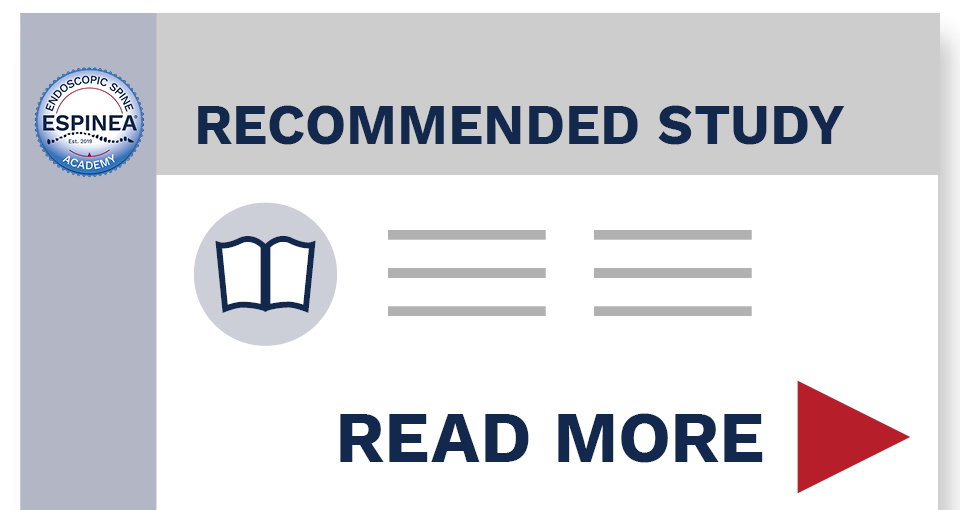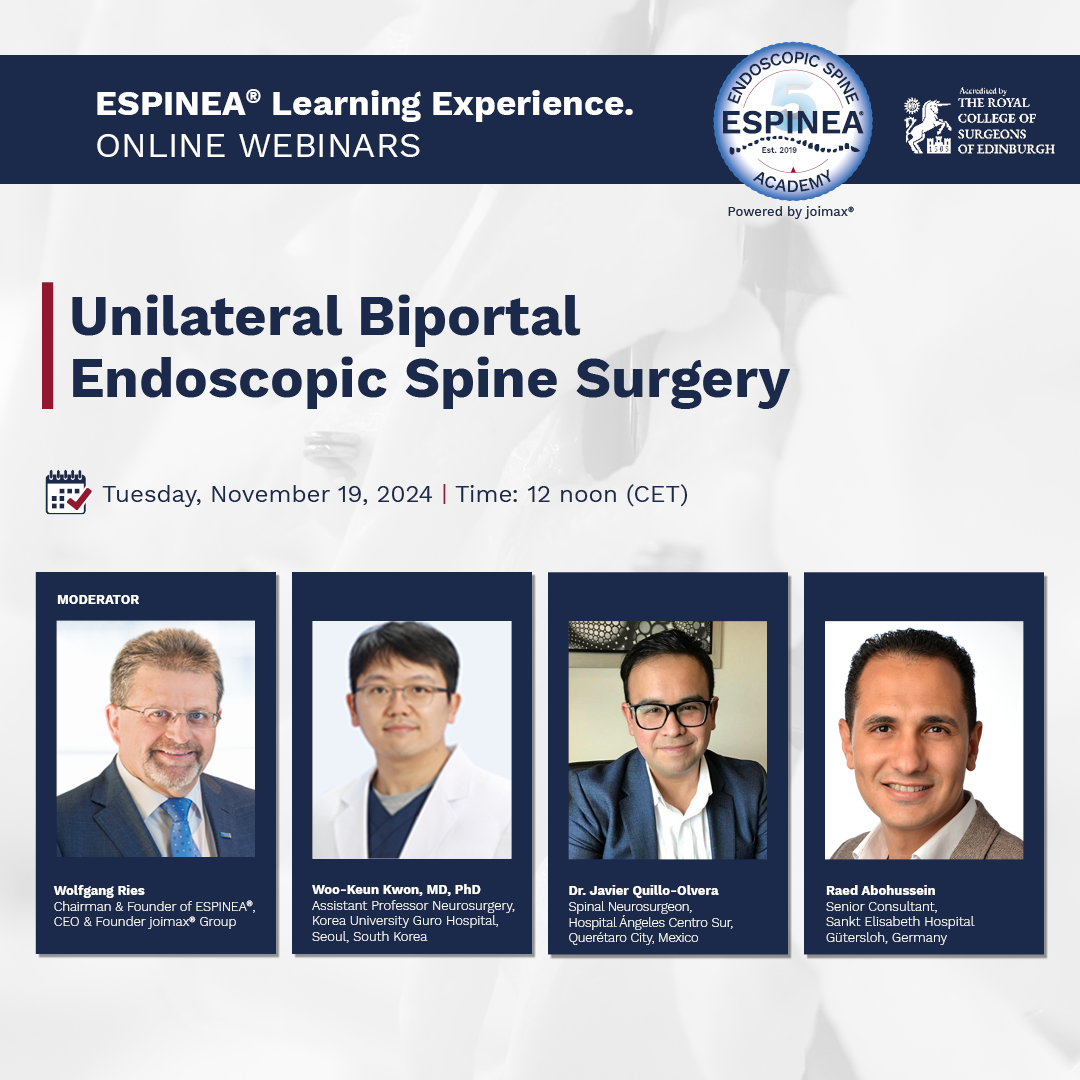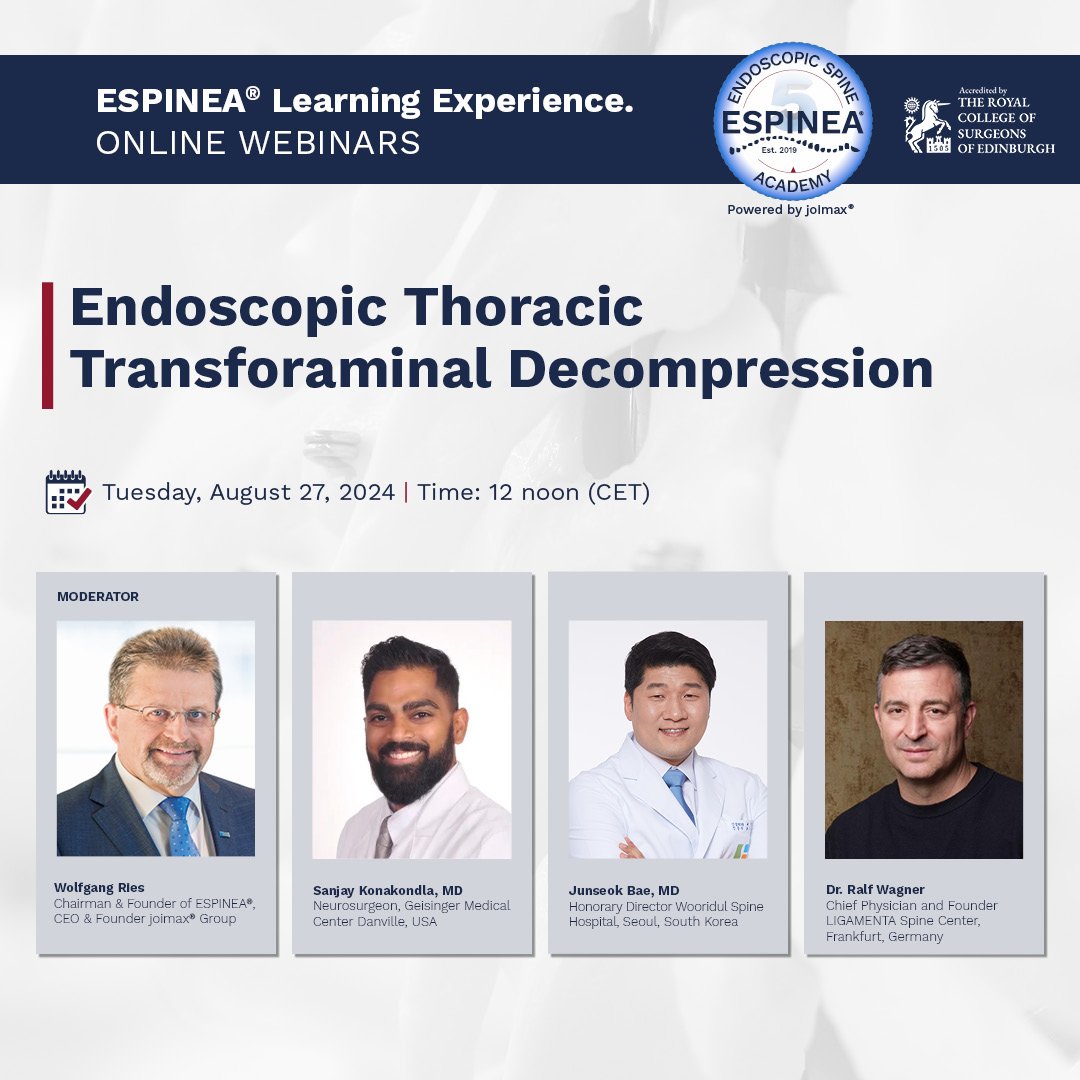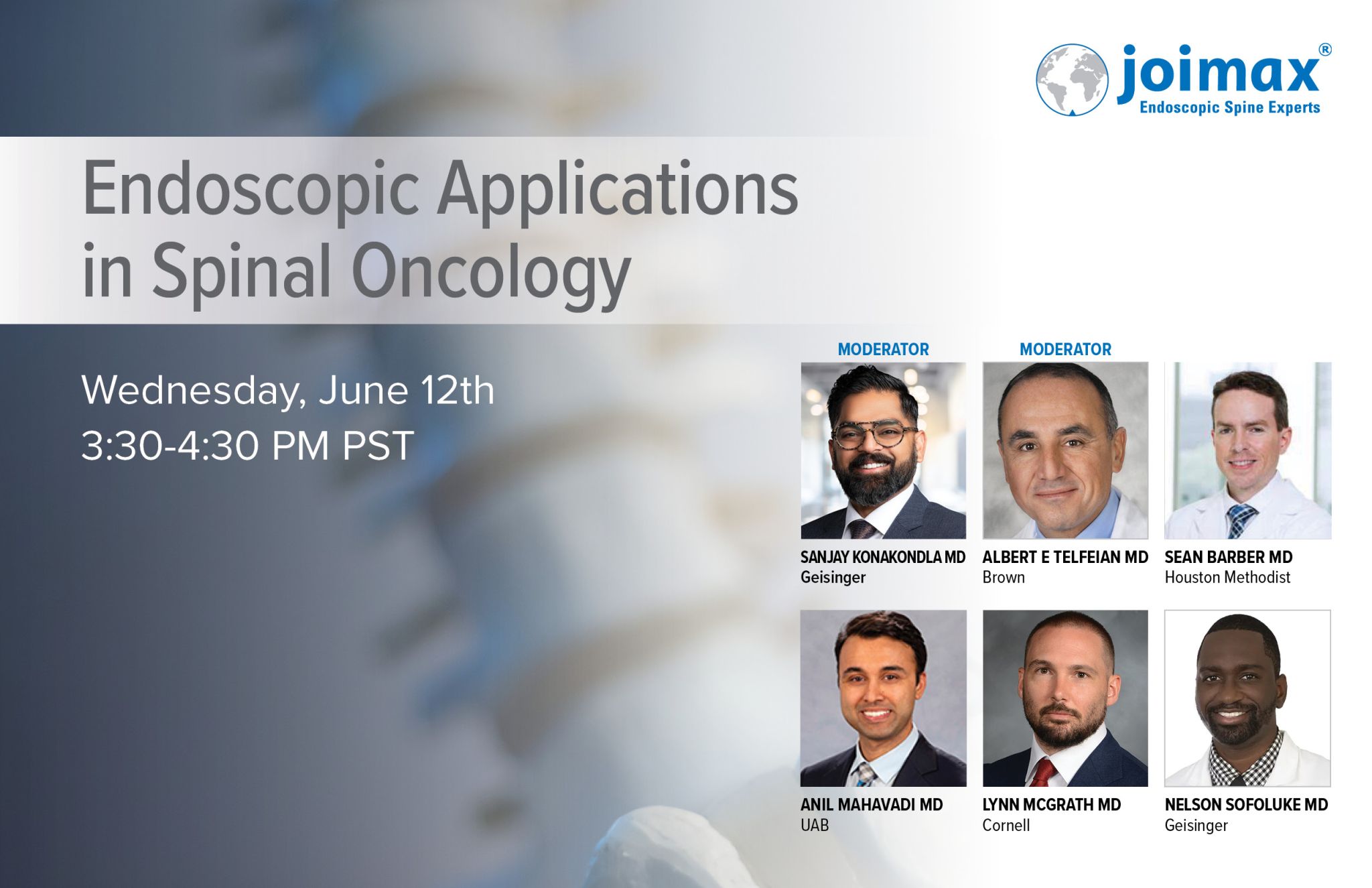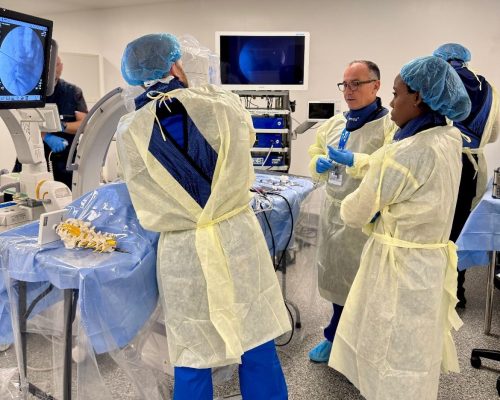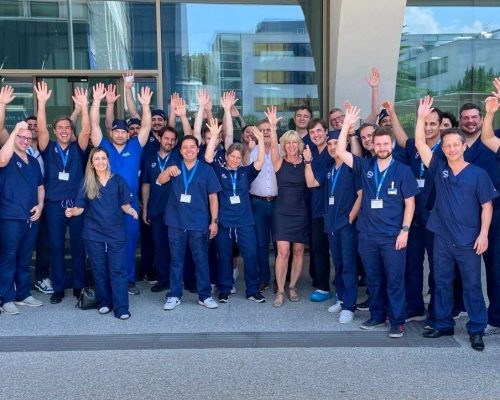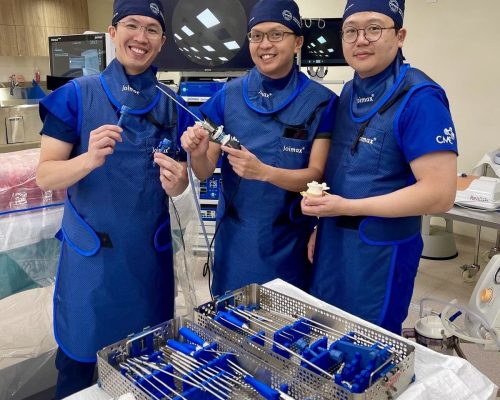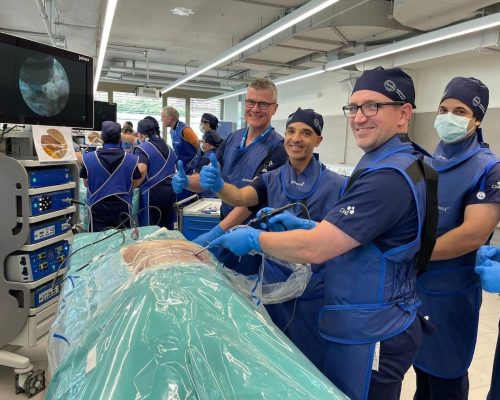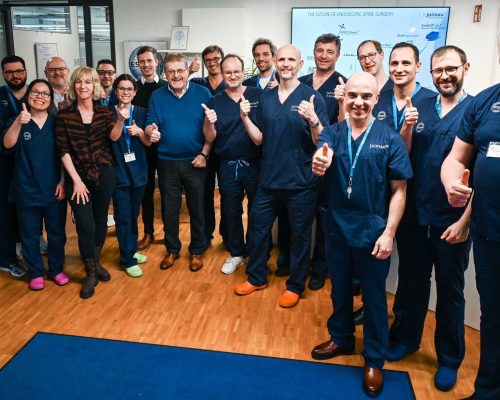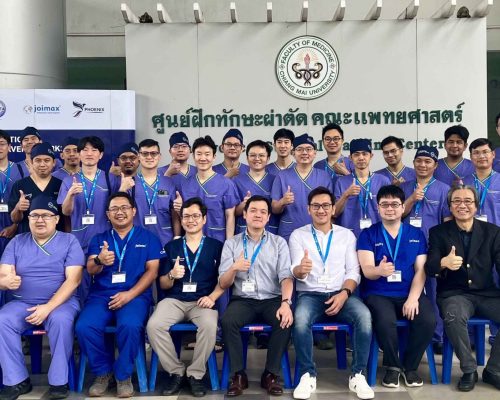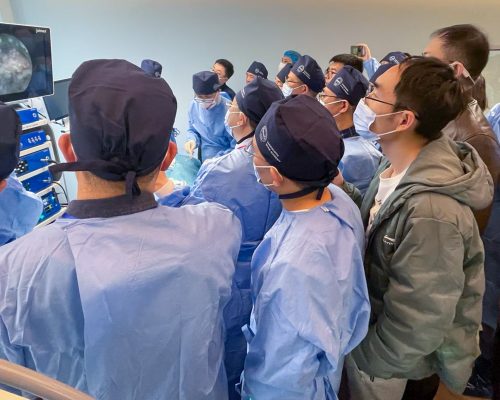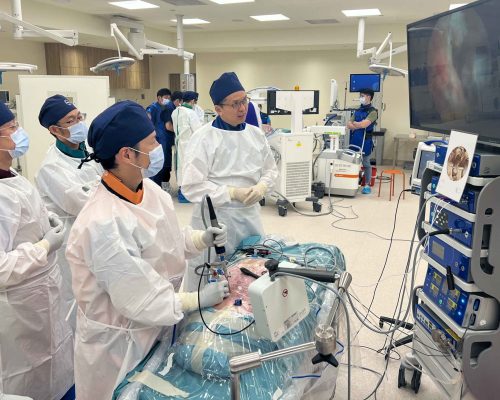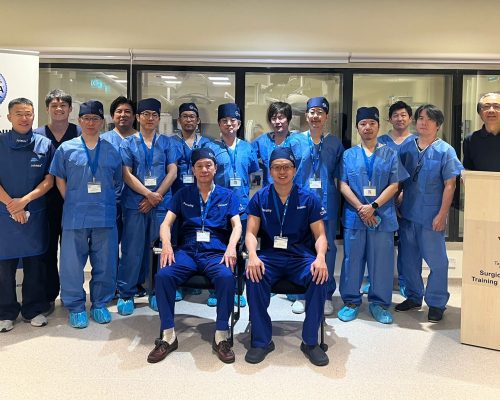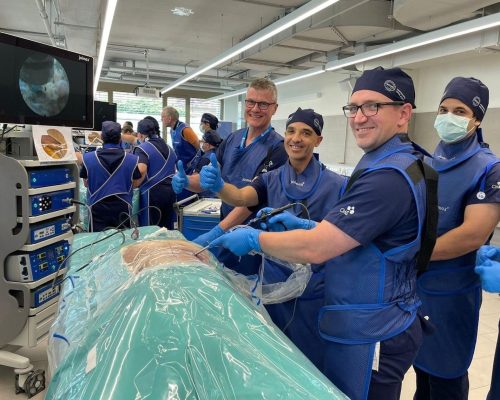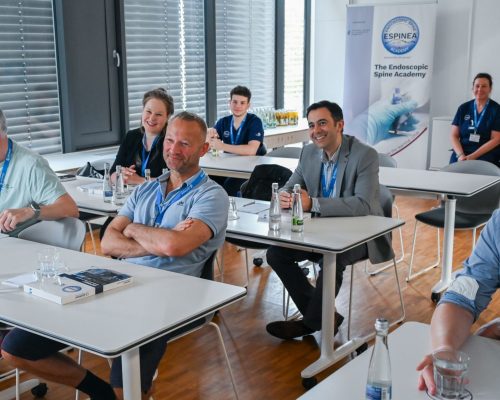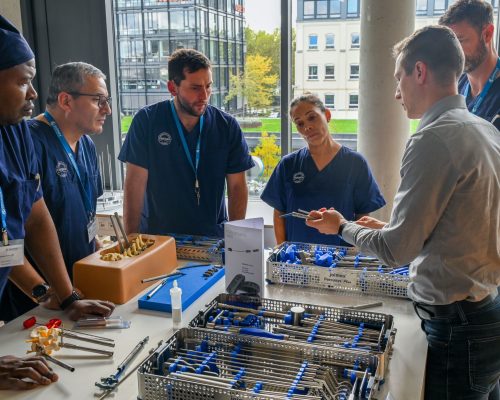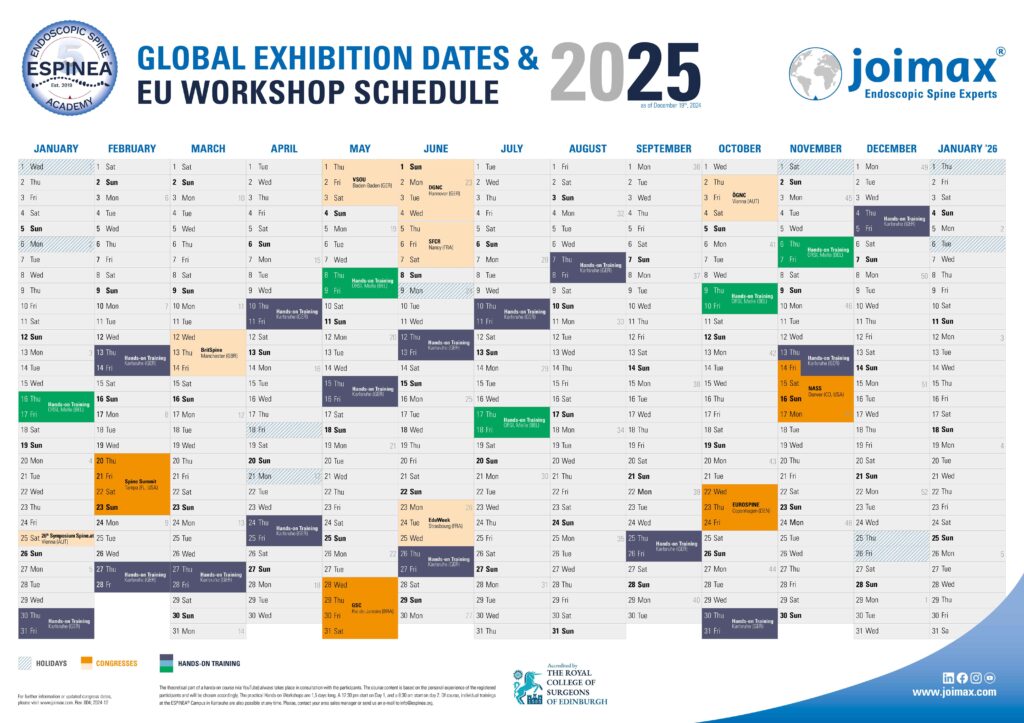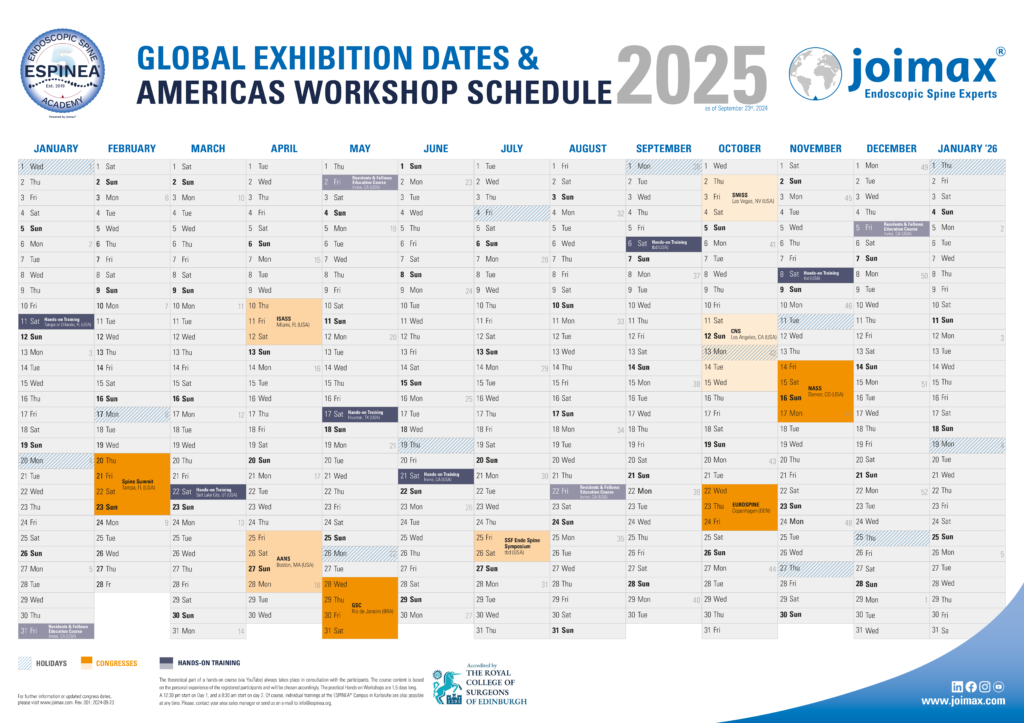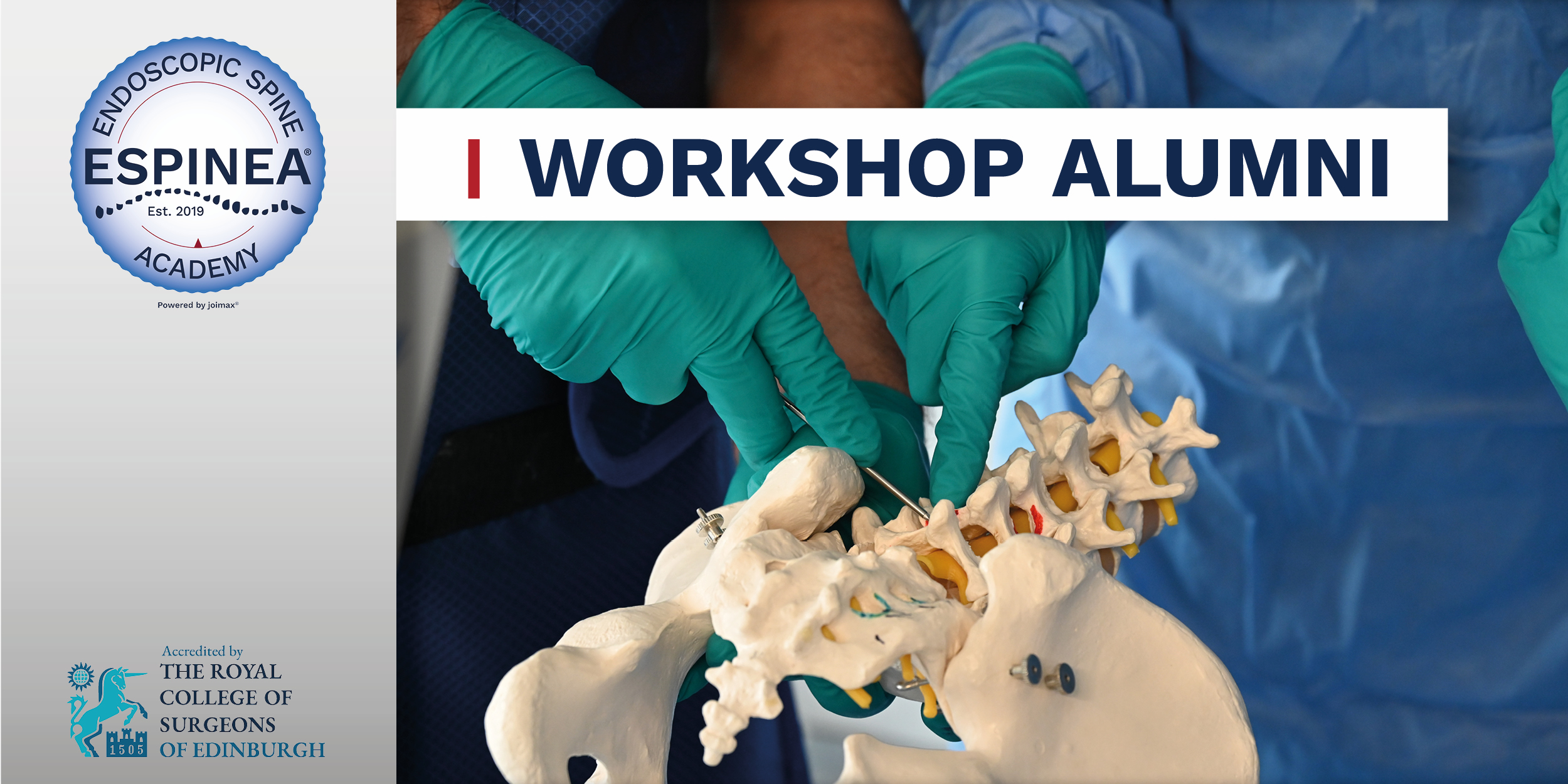
Extend the scope of endoscopic spine surgery!
Dear Reader,
Minimally invasive spine surgery (MISS) has seen remarkable advancements over the years. Full Endoscopic Spine Surgery (FESS), emerged as the ultra-minimally invasive technique, encompasses transforaminal and interlaminar approaches. The pioneering transforaminal endoscopic spine surgery introduced the least invasive approach to treat herniated discs -an approach that remains unmatched in its minimal invasiveness! This was followed by the interlaminar approach, expanding the scope of FESS to address a wider range of conditions. More recently, the Unilateral Biportal Endoscopic (UBE) technique has emerged, providing greater surgical flexibility. While debate about the superiority of these techniques continues, both consistently demonstrate better clinical outcomes than open surgery, with less tissue trauma, faster recovery, and reduced complications.
In this alumni letter, we would like to emphasize that FESS and UBE are not competing techniques—they are complementary tools in the MISS spectrum. Mastering both allows surgeons to tailor their approach to each patient’s specific condition, enabling them to address a broader range of pathologies while achieving optimal outcomes.
Dr. Jing Hu
Director Clinical Affairs & Clinical Research
Mr. Wolfgang Ries
Chairman & Founder of ESPINEA®
CEO & Founder joimax® Group
FESS vs. UBE: Complementary Tools in MISS
Advantages
- Minimally invasive, with minimal tissue disruption and faster recovery.
- Effective for isolated pathologies like herniated discs, foraminal stenosis, cervical and thoracic cases
- Bimanual instrumentation with broader visualization, suitable for complex cases.
- Easier transition for surgeons familiar with conventional techniques, e.g. in orthopedics.
Challenges
- Unimanual instrumentation.
- Proficiency typically achieved after ~30 cases
- Slightly more invasive than FESS but still significantly less than open surgery.
- Proficiency achieved after ~39* cases (*See literature below)
FESS
Advantages
- Minimally invasive, with minimal tissue disruption and faster recovery.
- Effective for isolated pathologies like herniated discs, foraminal stenosis, cervical and thoracic cases
Challenges
- Minimally invasive, with minimal tissue disruption and faster recovery.
- Effective for isolated pathologies like herniated discs, foraminal stenosis, cervical and thoracic cases
UBE
Advantages
- Bimanual instrumentation with broader visualization, suitable for complex cases.
- Easier transition for surgeons familiar with conventional techniques, e.g. in orthopedics.
Challenges
- Slightly more invasive than FESS but still significantly less than open surgery.
- Proficiency achieved after ~39 cases
Of Groundbreaking Technologies
The evolution of MISS continues to break new ground. Emerging technologies, such as a robotic arm holding a monoportal endoscope (Bimanual endoscopy), offering a significant leap forward. By combining the bimanual capabilities of UBE with the minimally invasive nature of FESS, this approach promises to reshape spine surgery by:
- Enhancing precision and reducing the technical burden.
- Expanding the scope of treatable conditions with greater ease, due to bimanual surgery option.
- Improved ergonomics for surgeons while supporting better patient outcomes.
The complementary nature of FESS and UBE underscores their essential role in MISS. By mastering both techniques, surgeons can reduce surgical trauma and offer patients with tailored, minimally invasive solutions. Looking to the future, embracing innovations like robotics will ensure surgeons remain at the forefront of spinal surgery advancements, offering safer and more effective care.
Literature
Further Reading
Prospective comparative analysis of three types of decompressive surgery for lumbar central stenosis: conventional, full-endoscopic, and biportal endoscopic laminectomy. Hwang YH, Kim J-S, Chough C-K, Cho J, Kim H-S, Jang J-W, Park C-K, Lee C-W, Park M-K, Son S-K and Park J-Y. Sci Rep 2024; 14: 19853.
To learn more about the learning curve
Meta-Analysis of Learning Curve in Endoscopic Spinal Surgery: Impact on Surgical Outcomes. Álvarez de Mon-Montoliú J, Castro-Toral J, Bonome-González C, González-Murillo M. Global Spine J 2024; : 21925682241307634.
To learn more about the Bimanual endoscopy
Multiple Endoscopic Access Lumbar Interbody Fusion (MALIF): A New Technique for Unilateral Biportal Endoscopic Lumbar Interbody Fusion Using Monoportal Endoscopic Spine Surgery Techniques. Hiratsuka S, Sasaki K, Manabe N, Kaneko T, Hiratsuka S, Sasaki K. Cureus 2024; 16. doi:10.7759/cureus.74942.
ESPINEA® Learning Experience HIGHLIGHTS
Take a look at our selection of the latest and best webinar highlights in the field of endoscopic spine surgery!
Unilateral Biportal Endoscopic Spine Surgery
Gain deeper insights into FESS, UBE, and the future of MISS in our expert-led webinar. This webinar focuses on Unilateral Biportal Endoscopy (UBE). The following topics are addressed during the webinar:
» When to use Uniportal and when to use Biportal ESS? Indications, techniques and scientific evidence
(Woo-Keun Kwon, MD, PhD)
» The evolution and development of UBE with experience sharing
(Dr. Javier Quillo-Olvera)
» UBE and its application in endoscopic assisted fusion
(Raed Abohussein)
Endoscopic Thoracic Transforaminal Decompression
The webinar focuses on the latest in endoscopic spine surgery for the treatment of thoracic disc herniations and stenoses. This is a prime opportunity to get insights into the latest advancements in this specialized area, to explore techniques, studies, and case examples, as well as to engage with leading experts in the field.
» Review of Endoscopic Thoracic Transforaminal Decompression topic and presentation of a special case (Sanjay Konakondla, MD)
» Introduction to the Wooridul Techniques, Studies, and Cases (Prof. Junseok Bae)
» Case Examples and Experience Sharing with Surgery Videos (Dr. Ralf Wagner)
Endoscopic Applications in Spinal Oncology
Join esteemed experts Drs. Sanjay Konakondla, Albert Telfeian, Lynn McGrath Jr., Sean Barber, Anil M., and Nelson Sofoluke, as they delve into the transformative potential of endoscopic spine surgery in oncology.
EDUCATIONAL ACTIVITIES
Essential tips to master thoracic discectomies by Christoph Hofstetter, MD, PhD
Thoracic discectomies are challenging, but full-endoscopic techniques are transforming outcomes with reduced morbidity. Check out these essential tips from an expert to master these complex procedures.
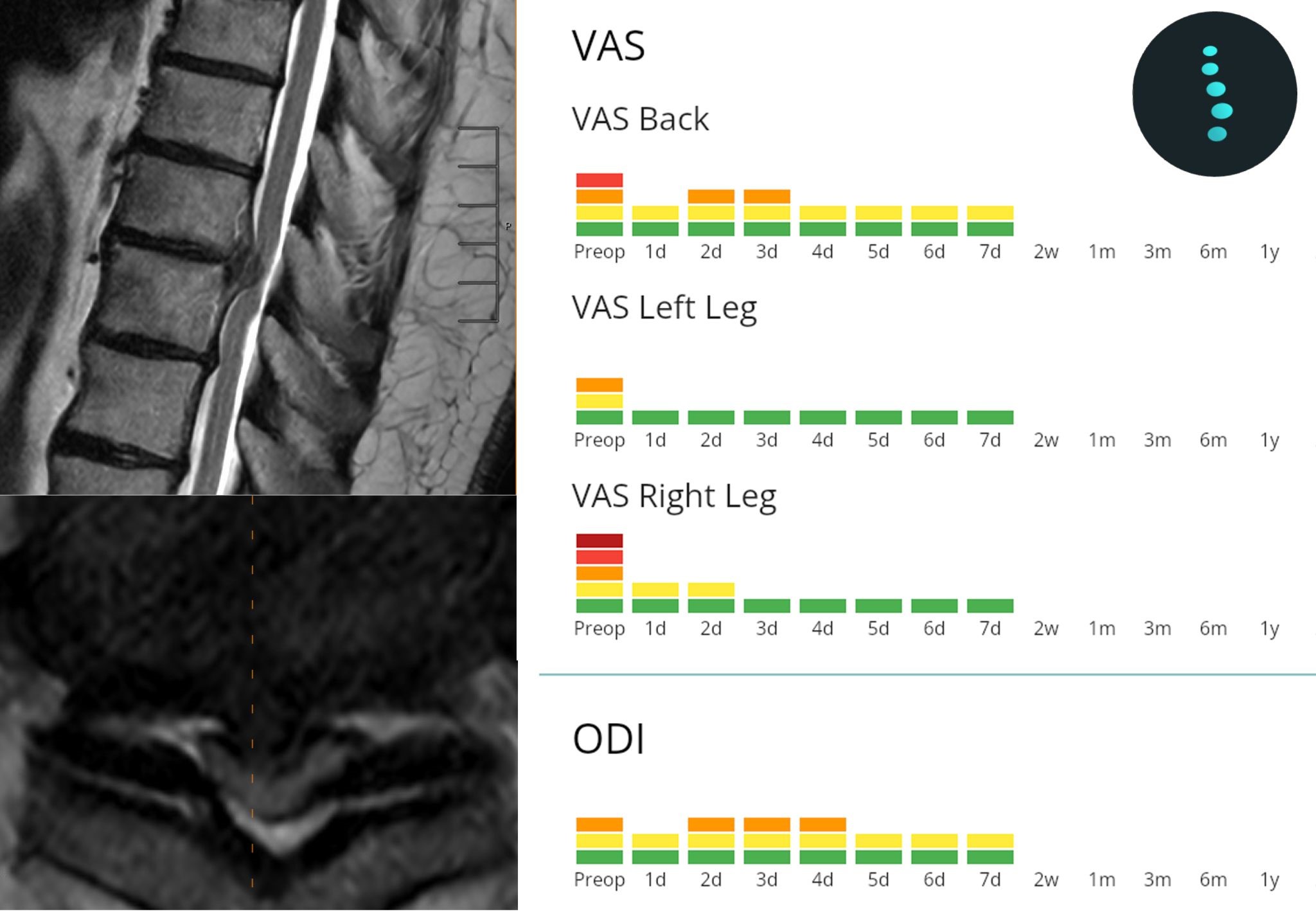

Christoph Hofstetter, MD, PhD
WORKSHOPS
If you want to move to the next level in your endoscopic knowledge, ask us about advanced or expert level workshops.
These customized hands-on events are tailored to your preferred area of focus.
Work with one of our experienced instructors and shorten your learning curve.
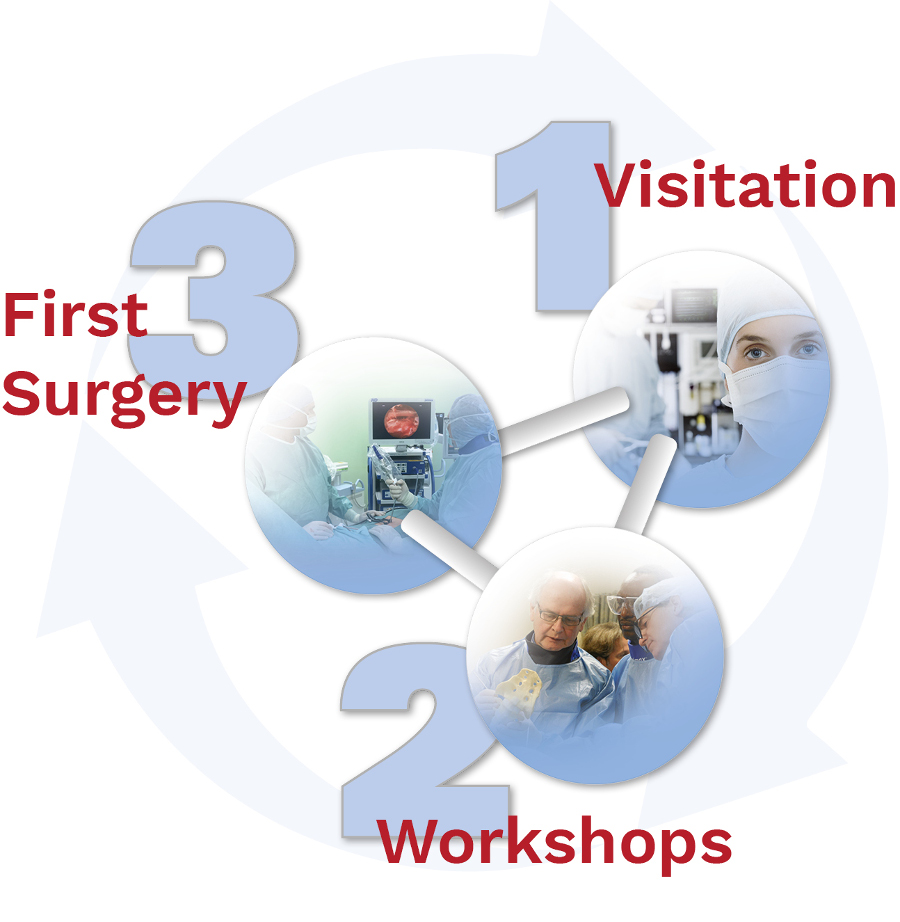
Workshop Calendars
Our workshop calendars offer a detailed overview of upcoming Workshops and Congresses.
Stay up-to-date on the next educational events about endoscopic spine surgery.
EVENT HIGHLIGHTS
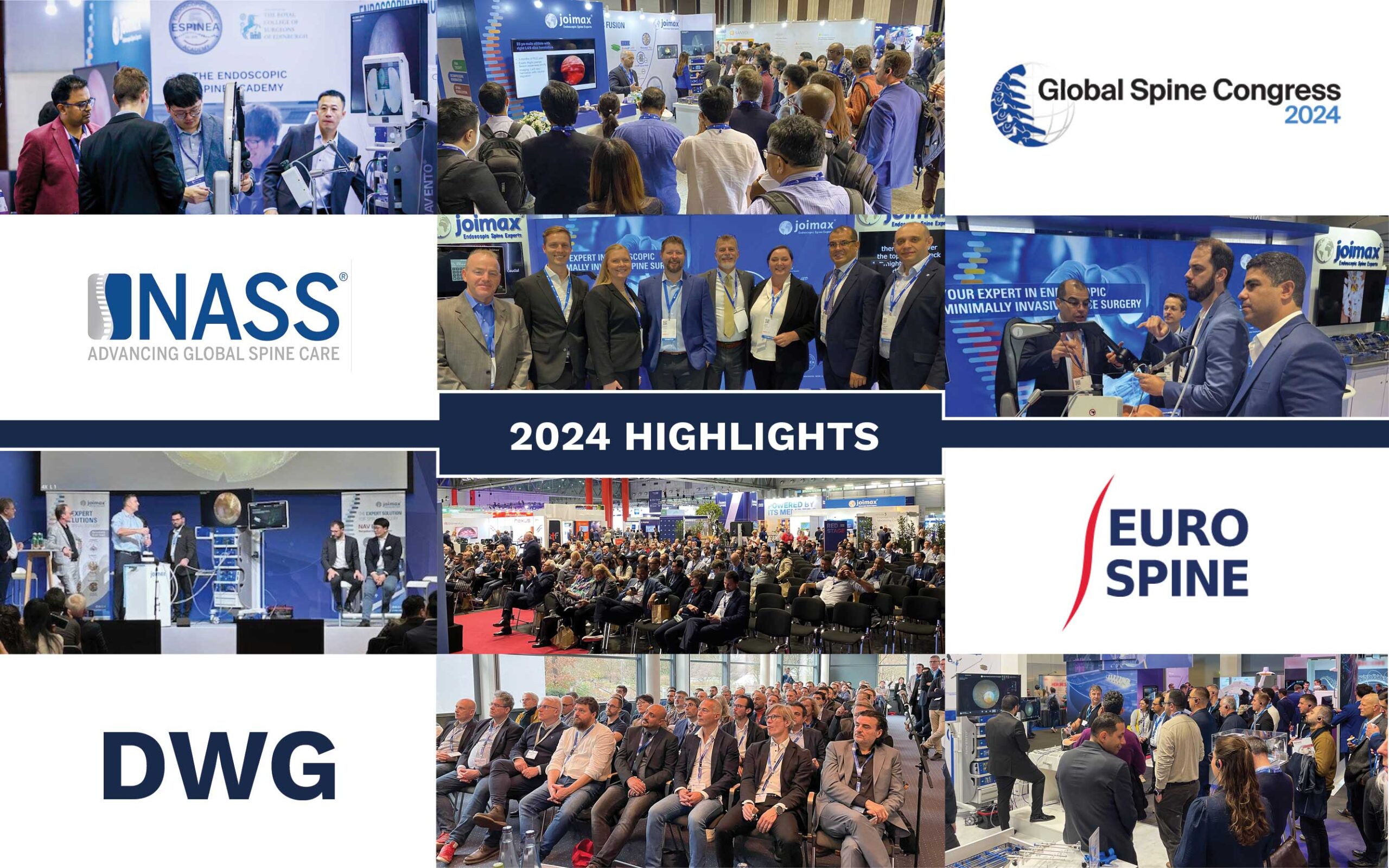
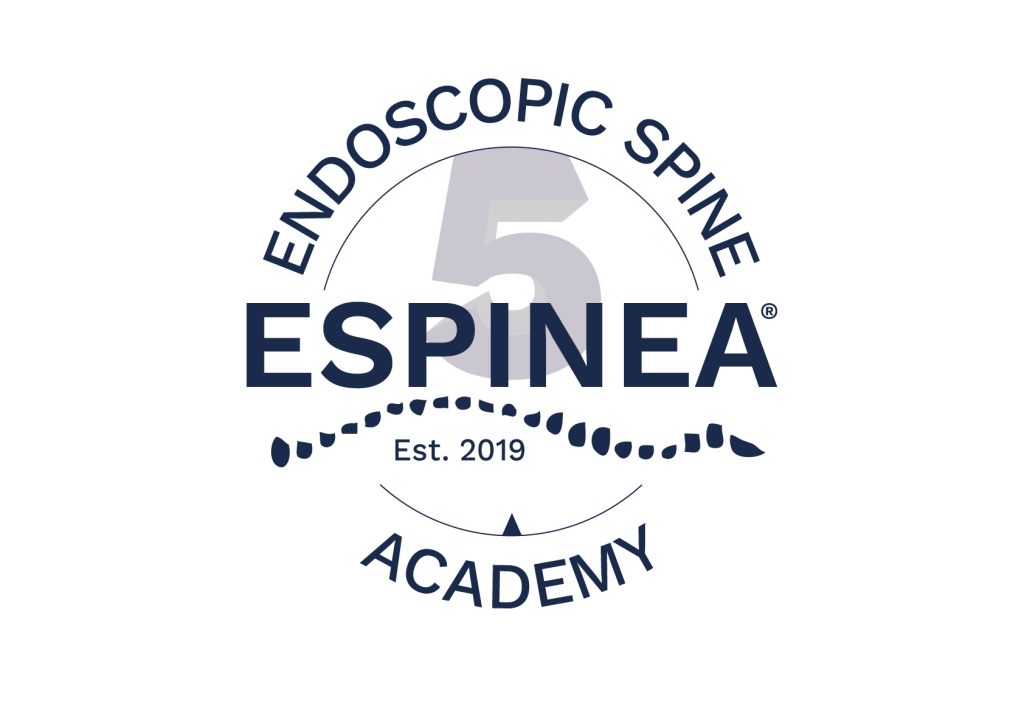
ESPINEA®
Amalienbadstraße 41, Raumfabrik 61
76227 Karlsruhe, Germany
Phone +49 (0) 721 255 14-0
Fax +49 (0) 721 255 14-920
E-Mail info@espinea.org
Net www.espinea.org
Responsible for content:
joimax® Clinical Research and
joimax® Marketing & Education
